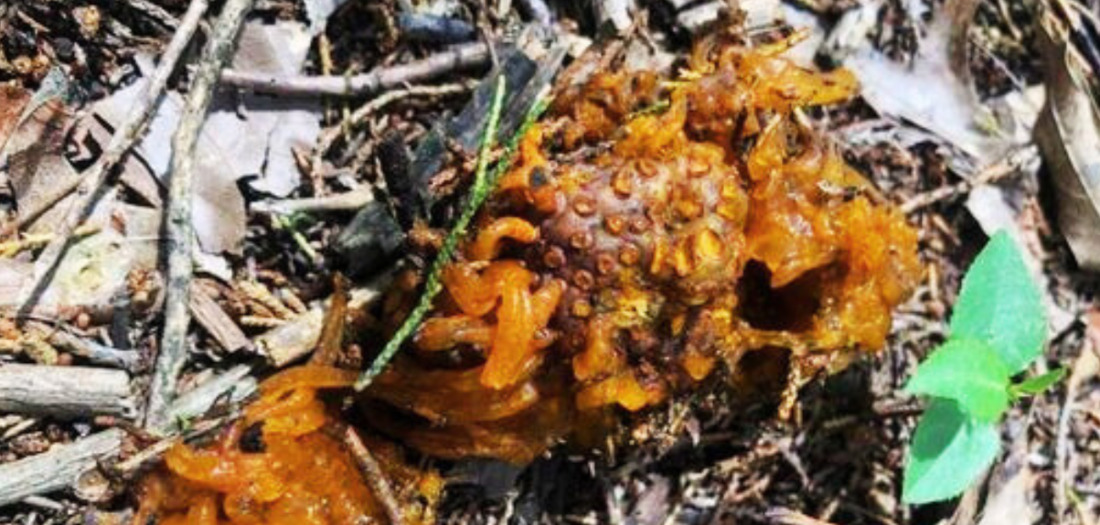Cultivating and caring for a backyard full of plants not only provides a serene escape from everyday stress, but also presents opportunities to explore the wonderful world of nature on a microscopic level. A special discovery made by an avid gardener in Oklahoma shows how mysterious and unpredictable gardening can sometimes be. This person came across an unusual gelatin-like substance in the trees, described as a 'jelly alien nut', which led to a fascinating journey into the world of plant diseases.
Content:
Cedar-apple rust
Cedar apple rust, the cause of this bizarre phenomenon, is a disease caused by a complex fungus that depends on two different hosts to complete its life cycle.
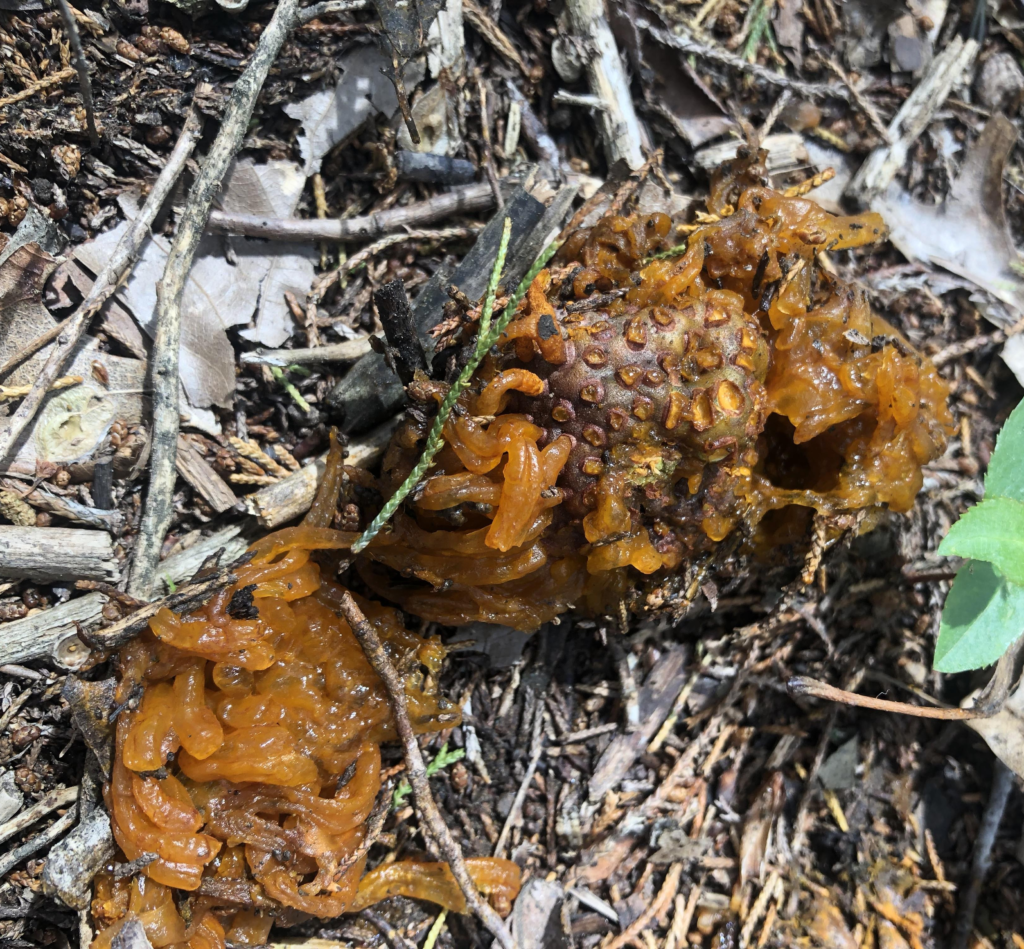
Despite the evocative name, it's not just cedars that serve as hosts; juniper bushes also play a crucial role in the spread of this disease.
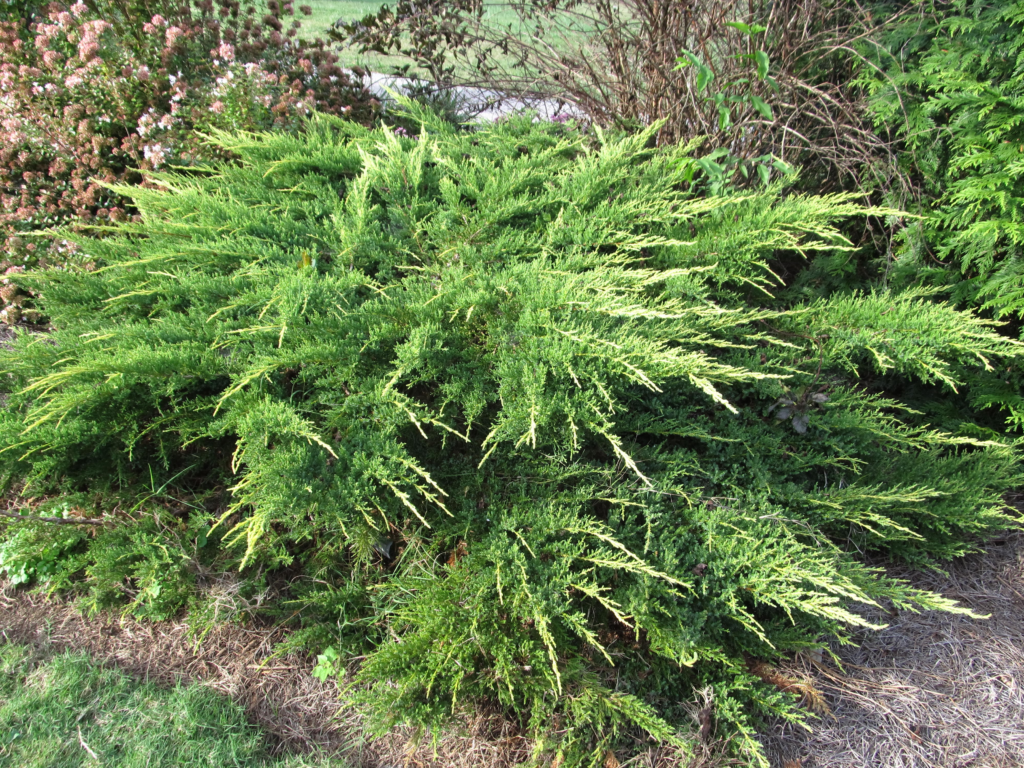
Juniper bushes
On juniper bushes, the first signs of infection are the formation of hard, brown hives on the branches.
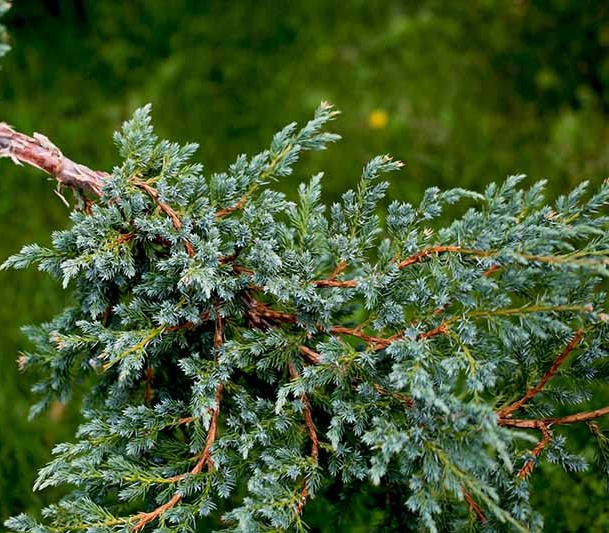
These hives transform into bright orange, jelly-like horns in the wet spring. Although this damage may seem impressive, it has little impact on the overall health of the juniper.
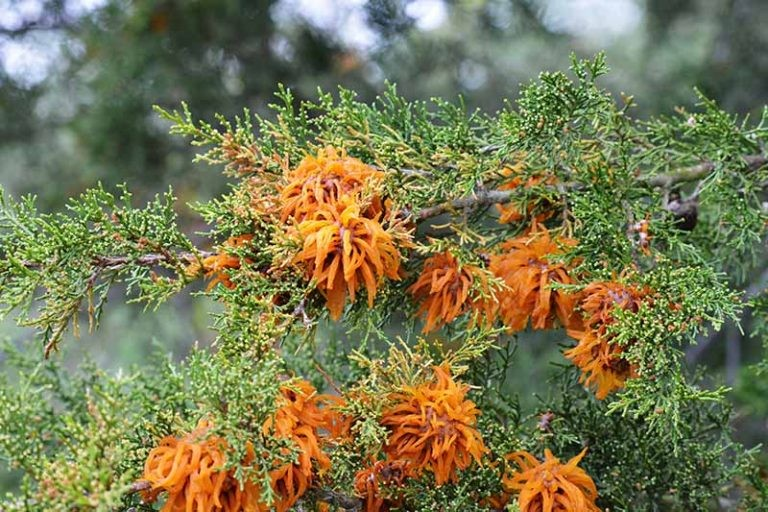
Apple trees
In apple trees, yellow lesions appear on the leaves after the flowering period.
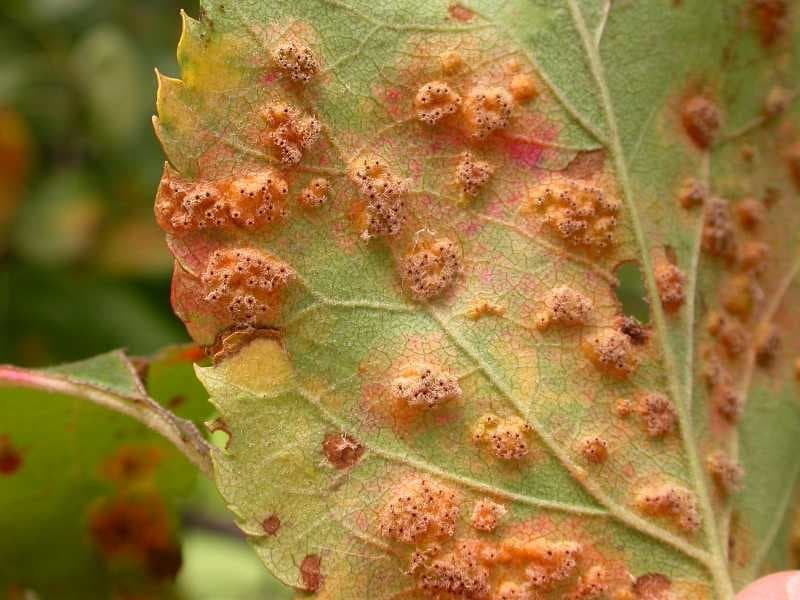
These lesions transform over the summer into thread-like or tubular structures that affect the tree's aesthetic value and possibly fruit production.
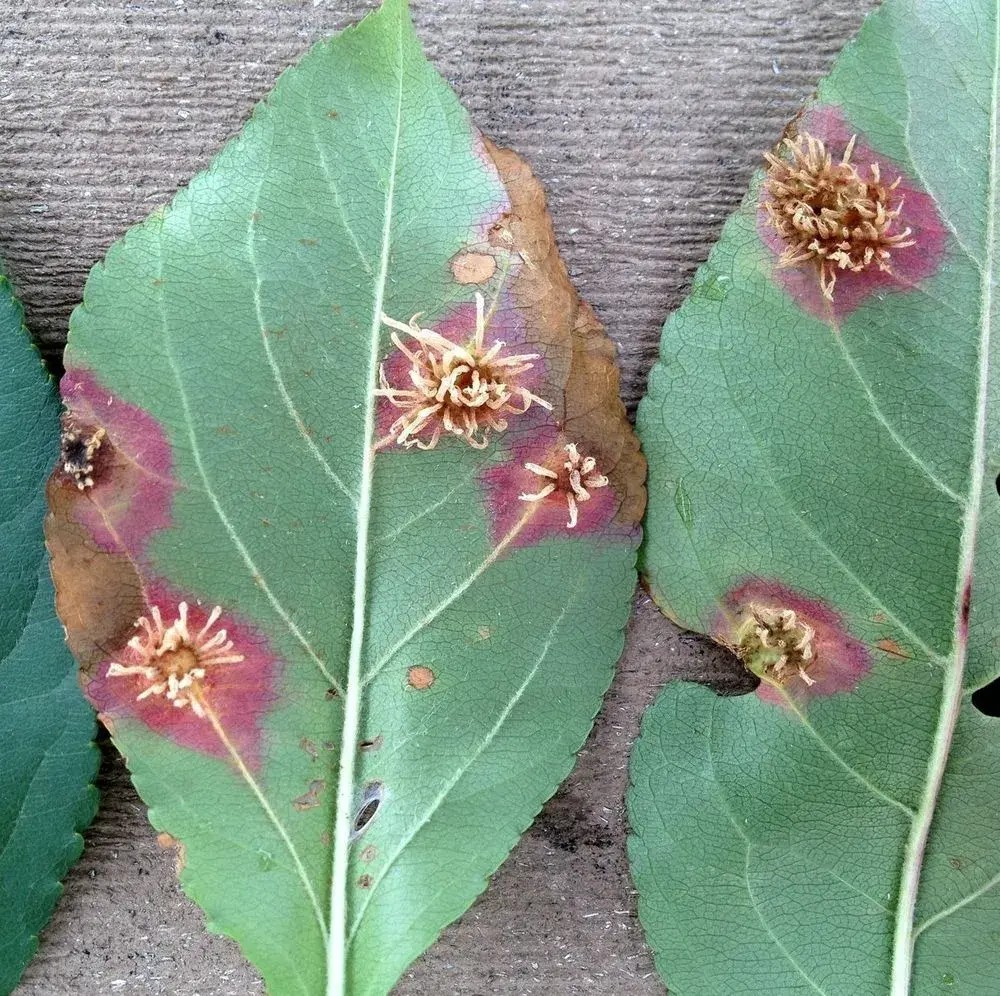
Life Cycle
The life cycle of cedar apple rust is both intriguing and complicated. It begins with the formation of hives, which after a year and a half turn into gelatinous masses.
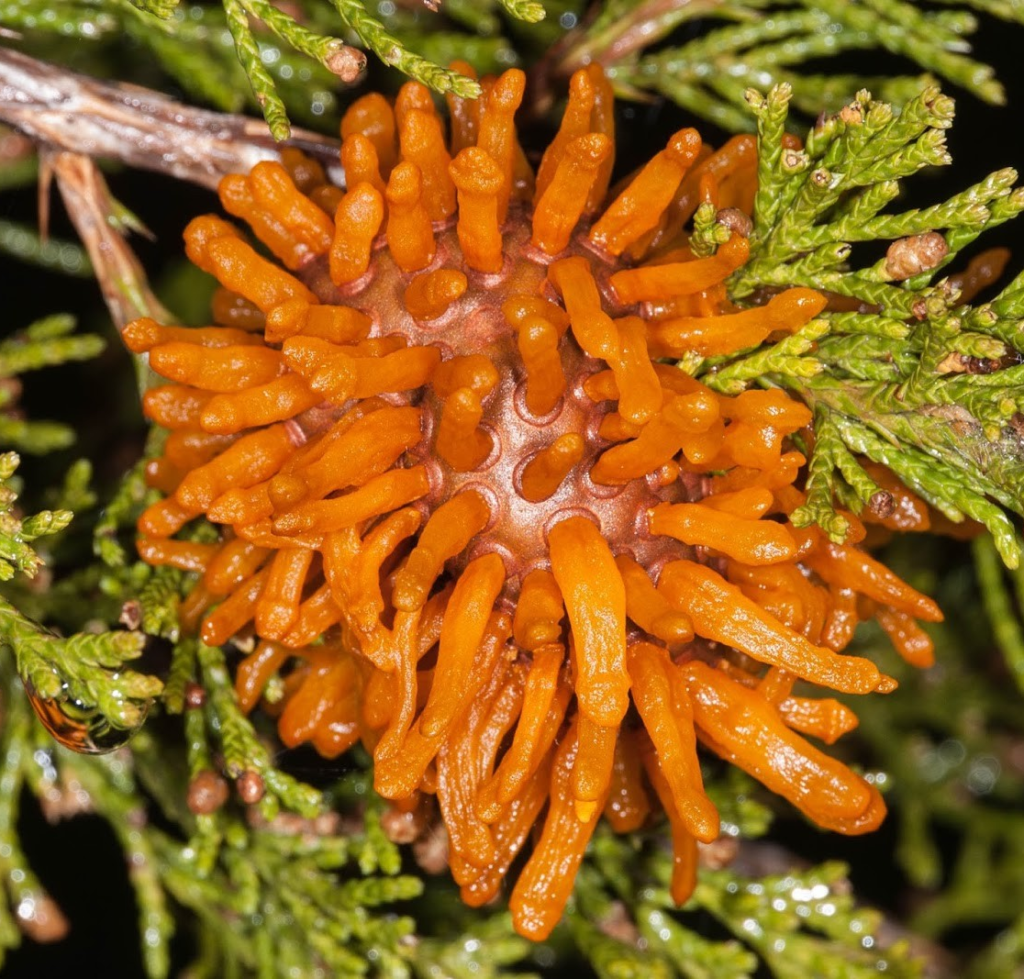
These masses then produce spores that spread the disease to nearby suitable hosts.
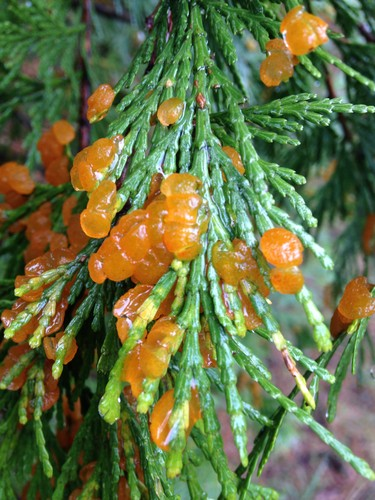
The telia horns that appear in spring are a crucial stage in the reproduction of the fungus, as they spread spores that cause new infections.
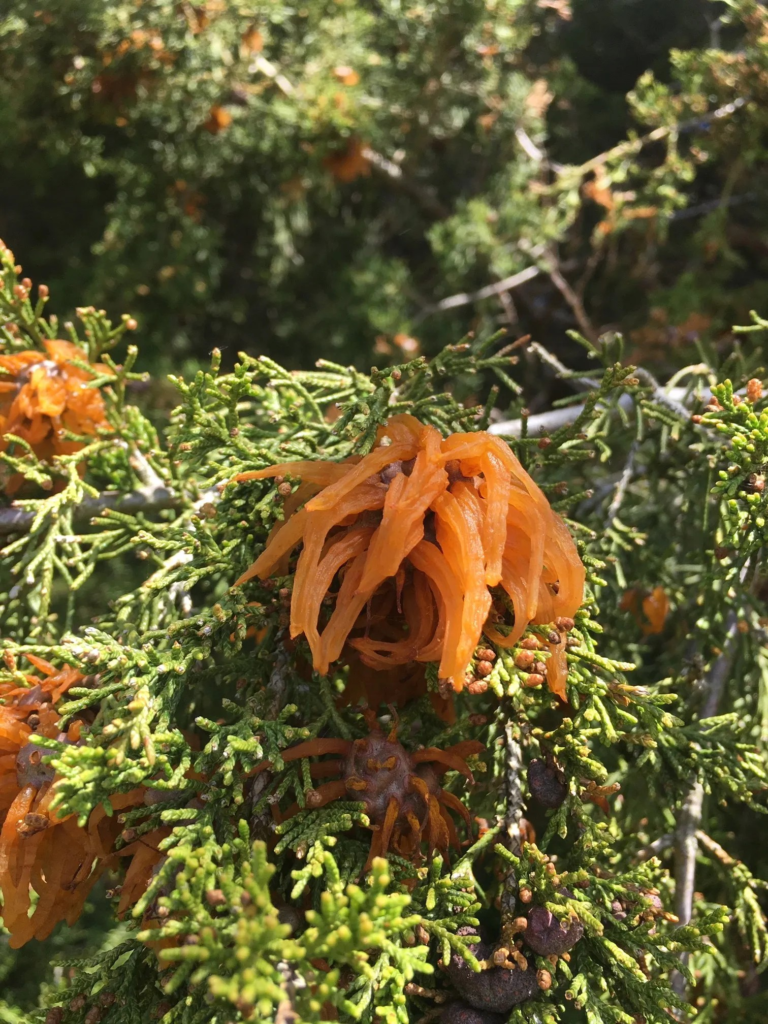
Control strategies
Despite the noticeable symptoms, cedar apple rust is relatively easy to control.
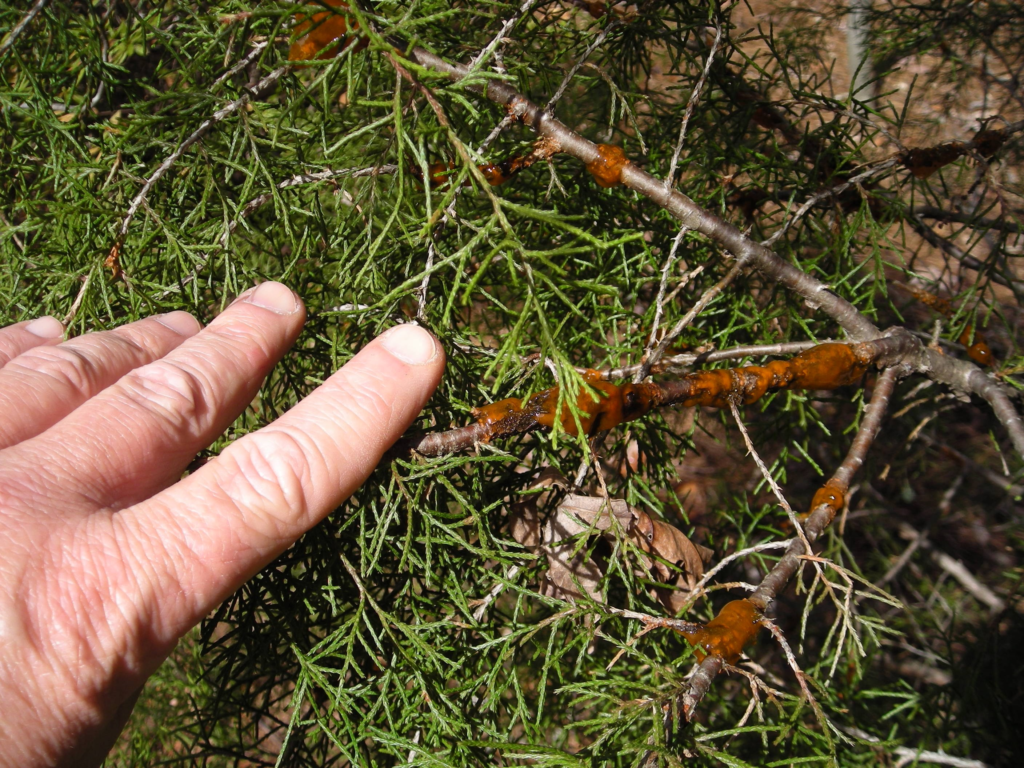
Physical removal of infected parts can prevent further spread, and choosing resistant apple varieties or using fungicides provides effective preventive measures.
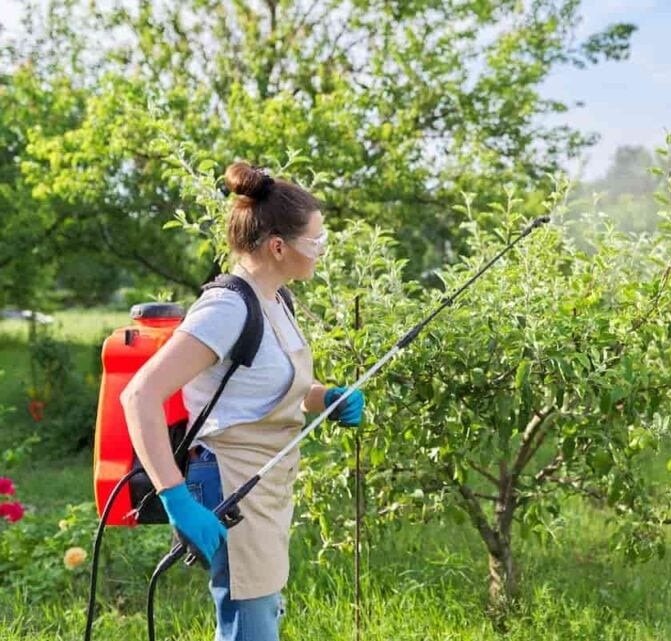
Meaning
This disease provides an excellent opportunity for gardeners to learn more about the interactions between different plant species and the dynamics of plant diseases.

Recognizing the symptoms and understanding the life cycle can help you manage the garden effectively and maintain both the health and beauty of the plants.
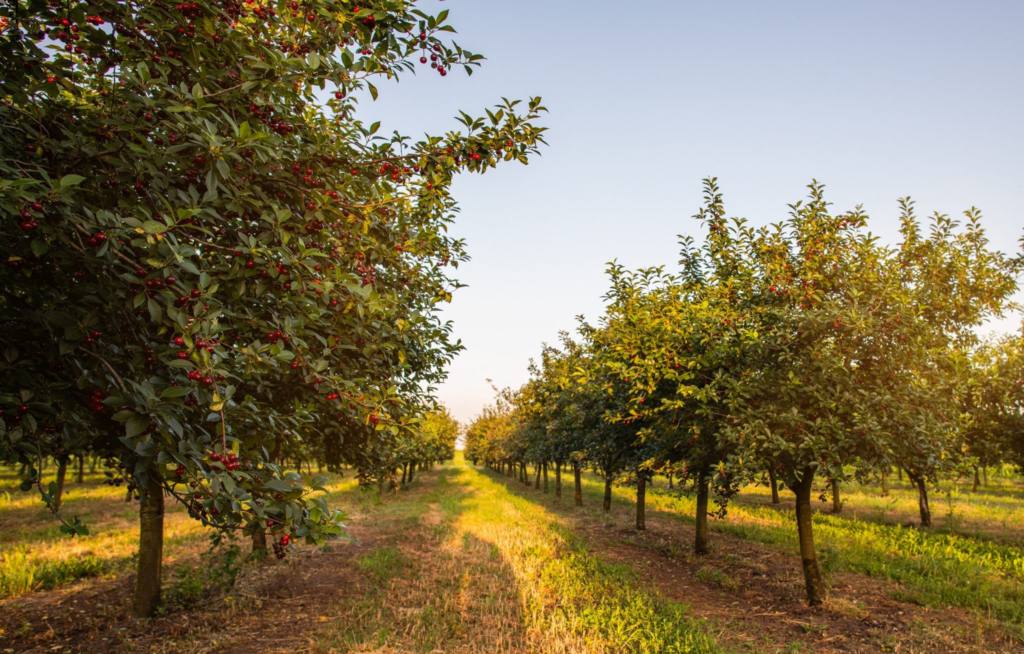
Important points
- Cedar-apple rust: A fungal disease that depends on two hosts: juniper bushes and apple trees.
- Symptoms: Brown hives on juniper and yellow lesions on apple trees.
- Life Cycle: Begins with hives, develops gelatinous lumps, and ends with telia horns that disperse spores.
- Control: Physical removal of contamination, use of resistant varieties, and fungicides.
- Educational value: Provides insight into plant interactions and disease dynamics.
Disclaimer
The information in this article has been carefully compiled to provide a comprehensive overview of cedar apple rust and its gardening implications. However, it is recommended to consult local experts for advice specifically tailored to your regional conditions and plant species.

